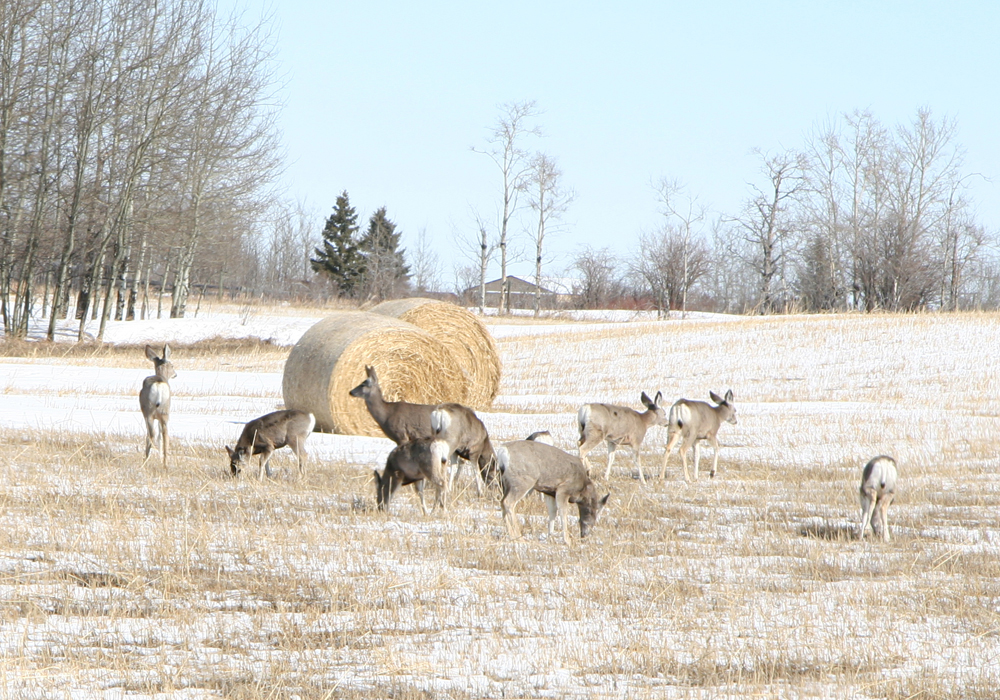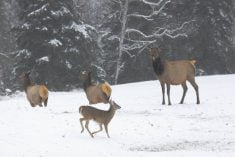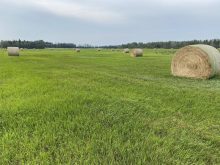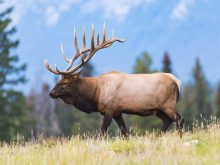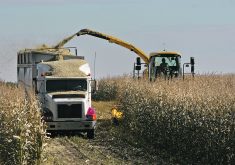Saskatchewan cattle producers who experienced wildlife damage to feed stacks may be eligible for some extra financial help from two programs announced last week.
The provincial and federal governments unveiled a supplemental freight adjustment that depends on location and damage, and the province enhanced its wildlife damage prevention program for all regions.
Provincial agriculture minister David Marit said some producers have had to travel 400 kilometres one way to find feed after two years of drought and then had wildlife damage to feed stacks they had.
“We heard (from industry) you can’t source feed in the southwest. You just can’t find it because whoever does have enough they aren’t going to share it or sell it,” he said in an interview.
The hardest hit area was split into three zones and the supplemental freight adjustment will be paid at either $135 per tonne, $80 or $40.
The zones include most of the southwestern and west-central regions.
Saskatchewan Crop Insurance Corp. administers the wildlife damage compensation program to all producers regardless of participation in crop insurance itself.
The agency has updated its 2022-23 compensation values for forage to include the freight adjustment payment. It will compensate producers for the additional cost of transporting feed and the higher-than-normal replacement feed costs in the affected zones.
The top-up is available to stacked forage claims registered between Sept. 1, 2022, and March 31, 2023. Producers must have filed a wildlife damage claim to be eligible.
Marit said freight is already built into the wildlife damage program so the top-up amount reflects the extra cost.
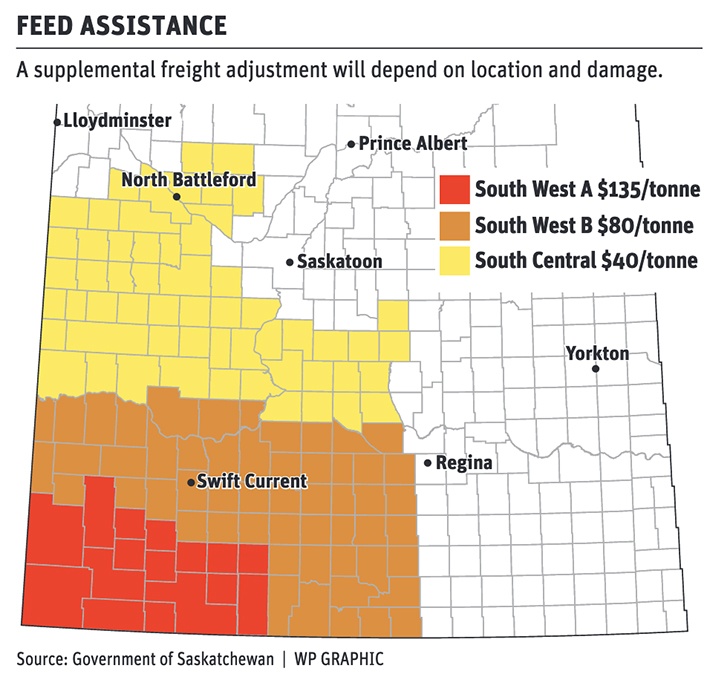
The prevention program includes funding for fences around feed yards.
“In 2021, we paid out a little over $4 million just in hay compensation (for) wildlife damage,” he said.
Marit said this program will allow producers to erect eight-foot page-wire fences around stacks to keep deer and elk out. He said producers will be eligible for assistance for two separate stacks.
Although he couldn’t say how much the program would cost, he said the overall wildlife damage program paid out more than $20 million last year.
“What I’m hoping that I see is an increase in fencing so it would drive down that in future years,” he said.
Producers who got compensation of more than $2,000 per feed storage site could be eligible for a fence package. SCIC will let eligible producers know the options and help select the correct one. Once the fence is built, the site is no longer eligible for wildlife damage compensation.
Marit said the price for a 400-foot by 400-foot fence came in at about $7,500.
“That’s a football field. That’s a big haystack,” he said.
He said one producer in his constituency lost 150 round bales to wildlife and they damaged a lot of other feed, too.
He predicted the assistance programs would go over well with producers.
The freight program is a one-year offer. Marit said officials would monitor the fencing program to see if it should be available long term.


